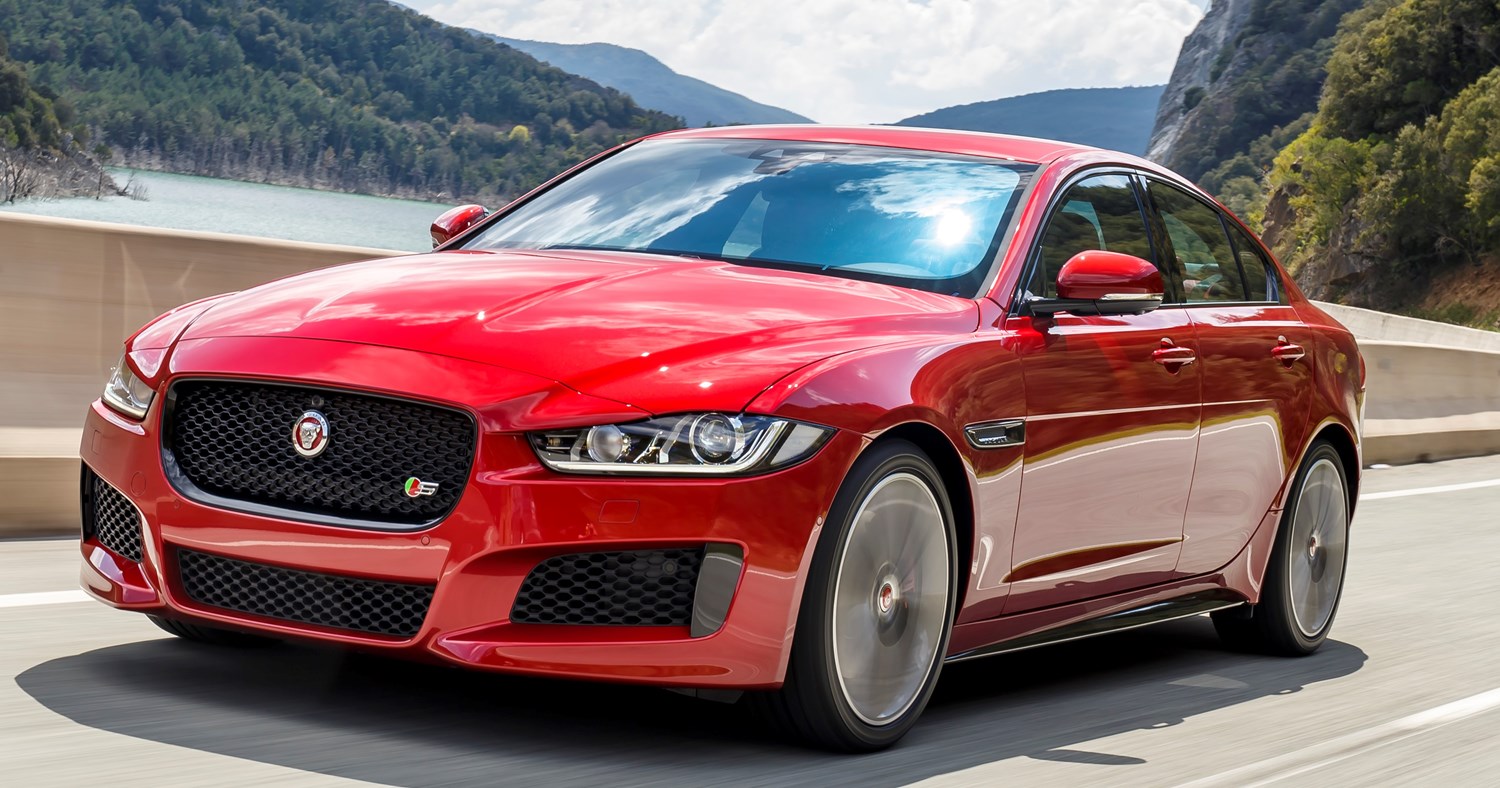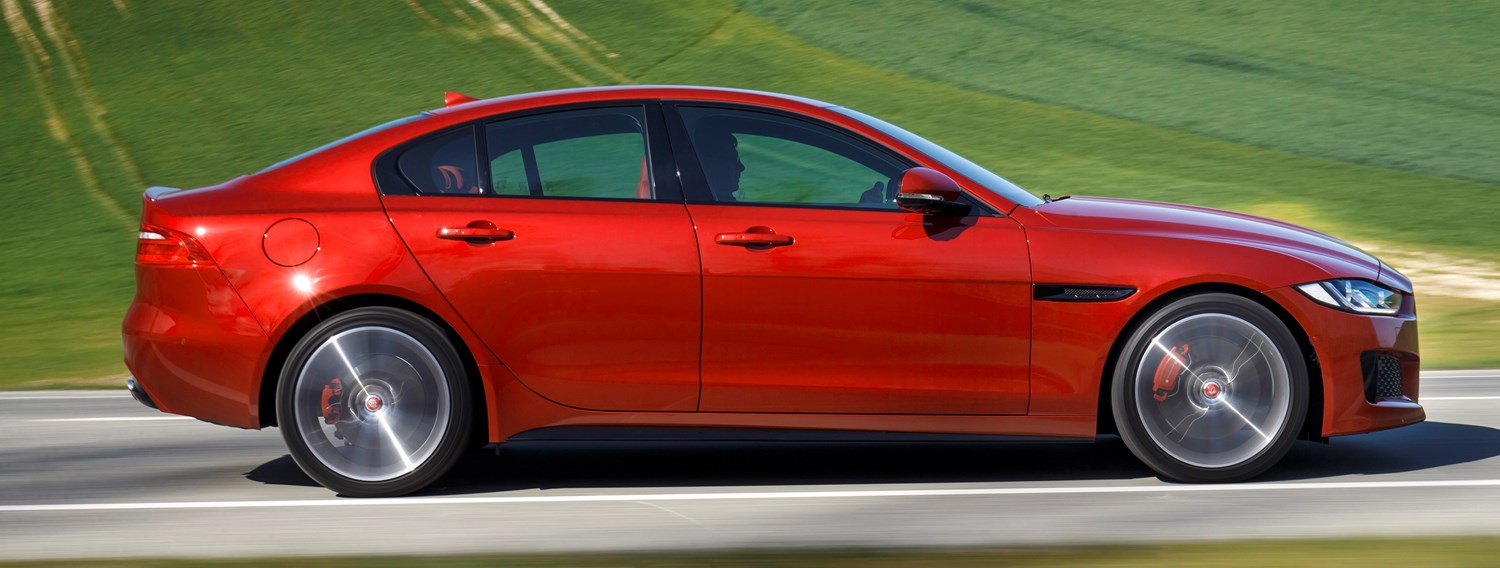Latest Model
As the first model to be built at JLR’s Solihull plant in 2015, the XE was the fourth model to be styled in Jaguar’s new ethos with a much sportier façade.
Coming in five trim levels – three luxury and two sporty – the XE does span a lot of the executive saloon market and takes on the BMWs, Mercedes and Audis of the sector in a big way.
In what is a hotly contested market, Jaguar had to make the XE as appealing to younger professionals as possible and with the excellent styling, they’ve done just that and it has an air of cool about it.
With JLR’s Special Vehicle Operations creating a brutish and unroadworthy special edition called the Project 8, the XE has appeal in the younger market, which is exactly what Jaguar wanted.
Value for money
As Jaguar models go, the XE in SE spec is probably the least luxurious one you can buy. But that’s a bit harsh to say considering the fact that it is a Jaguar, so you still get premium fabric seats, eight-inch touchscreen with infotainment system including Jaguar InControl apps, satellite navigation, Bluetooth with audio streaming, dual-zone climate control and cruise control with speed limiter, as well as a host of safety systems including autonomous emergency braking and lane departure warning.
So even as the cheapest Jaguar, you get the premium feel and accessories you would expect from a brand of Jaguar’s stature and the SE range starts from £28,295.
Due to the model’s release being just two years ago, the likelihood of finding high spec options at a cheaper price than SE is only possible if they are a) in bad condition or b) has been written off at some point in its short life. But as the starting price for a new XE S is £48,045, finding one for £33,000 is quite simple to do.
Considering the supercharged 3.0-litre V6 petrol engine under the bonnet produces 335bhp and gets the car from 0-60mph in 4.9 seconds, that is a potent combination and could be well worth the money.
One 2015 example comes in a matte British racing green and has only covered 12,315, with accessories such as 19-inch alloys, red brake calipers, sport leather seats, S bodykit, full speaker system, adaptive dynamics and a powered boot lid. Even though it costs more than the SE, the relative affordability of the power and accessories available in the XE S is well worth it.
Looks and image
As a new model, Jaguar had a blank canvas to restart their small executive line and using the design ethos used for the XJ, F-TYPE and XF, the XE fits into the handsome and modern line-up superbly well.
The squared grille, well-thought out exterior proportions and short back end make this a great alternative – in terms of looks at least – to the German monopoly of the executive saloon market.
The interior is also well-designed as everything is intelligently placed, is well-refined and everything is placed where you would expect it to be. There are good options in the interior trim department, as well as LED mood lights placed throughout the cabin.
With a new lightweight aluminium chassis and adaptive dynamic suspension, the XE is right up there when compared to its rivals when you’re behind the wheel.
Its fast steering, rear-wheel drive setup and excellent suspension gives you good standing on pretty much any road surface, and with the help of tech, such as torque vectoring by braking – which uses the brakes on the inside wheels whilst cornering to give you a better turn in – and configurable dynamics, you get a great feel while driving the XE and makes it a true competitor to the BMW 3 Series.
When you aren’t going hell-for-leather on an A or B-road, it is a comfortable cruiser with the multi-link suspension and when you turn up the heat it is excellently balanced. One criticism is the diesel and manual engine/gearbox combinations, which can feel a bit disjointed at times and can lack that oomph many may look for.
The aforementioned suspension is angled towards comfort in the luxury models, which gives an excellent ride on most surfaces and it even floats over most potholes without any sign of being unsettled.
The R-Sport and S models come with a much firmer sports suspension, which can feel very firm indeed and for the day-to-day it’s probably worth going for one of the comfort models, especially if long journeys are a regularity for you. Interior comfort is good for the driver and front passenger, who have plenty of space, but rear space is the major downside of the XE as for an executive saloon it can feel a bit cramped in the back, which could push people towards the BMW 3 Series and Audi A4.





